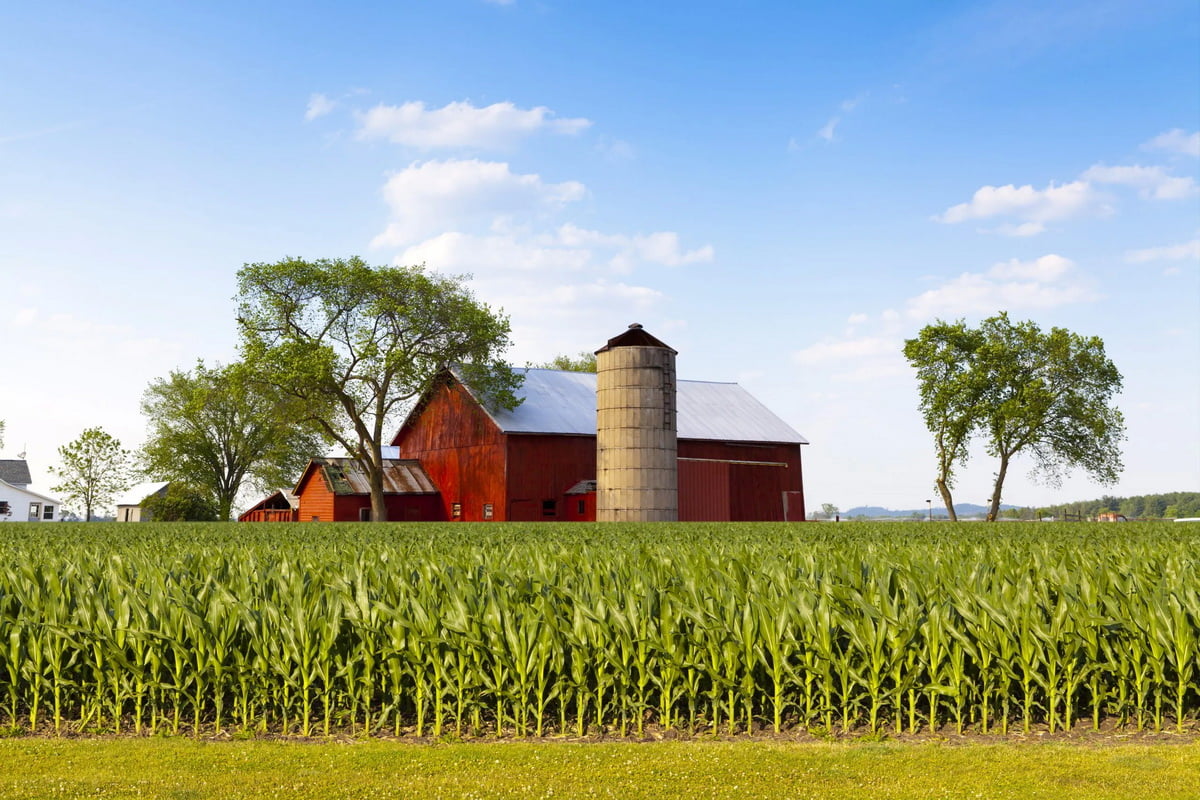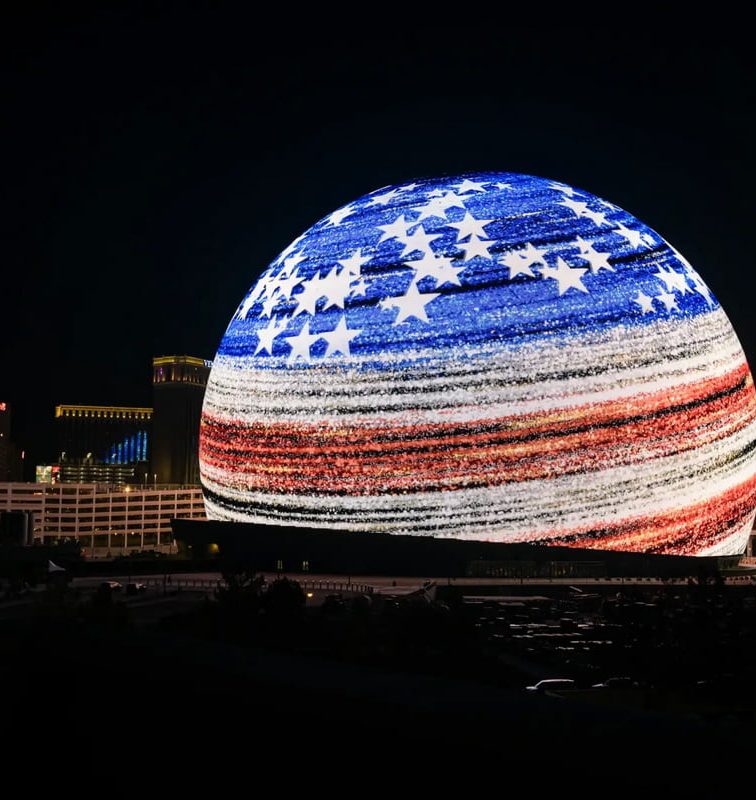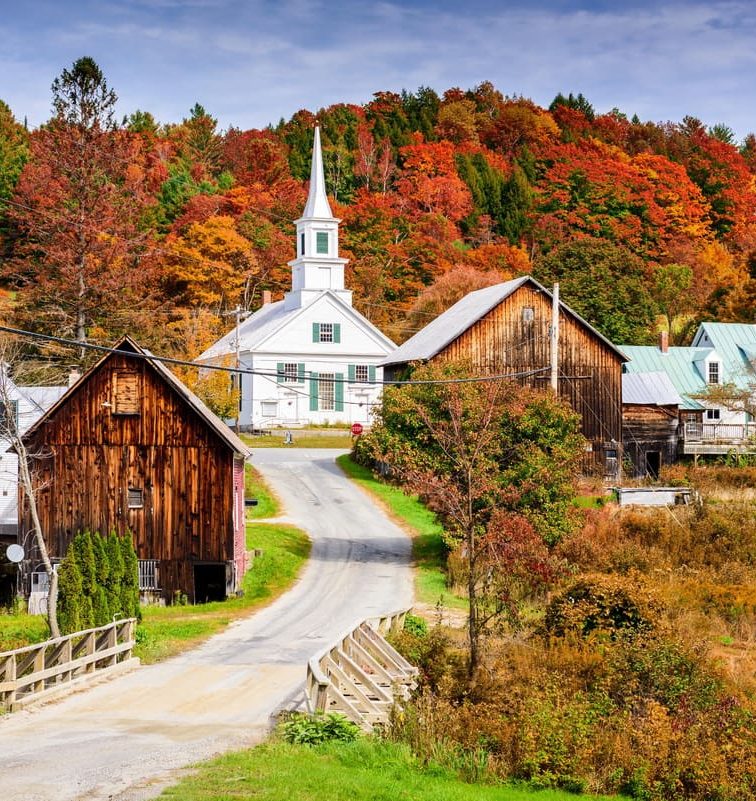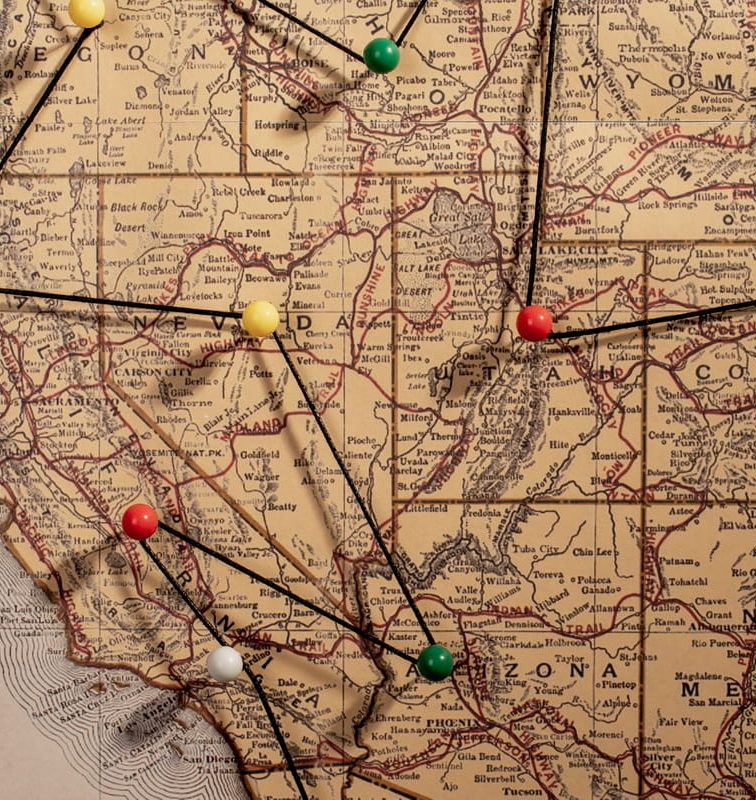Embark on a journey to the heart of America, where the landscape is as diverse as its history. Imagine a place where the largest freshwater lakes meet the world’s most fertile soil, where innovation in agriculture and industry has shaped the nation, and where cultural traditions from across the globe converge in a melting pot of customs and cuisine.
The Midwest is home to iconic sports teams, legendary music scenes, and cities that have risen, phoenix-like, from industrial decline to vibrant cultural centers. Prepare to be intrigued by tales of resilience, community spirit, and technological innovation. Dive into the surprising and enriching fun facts about the Midwest, where every state has a story waiting to be discovered.
1. The Great Plains: America’s Expansive Heartland
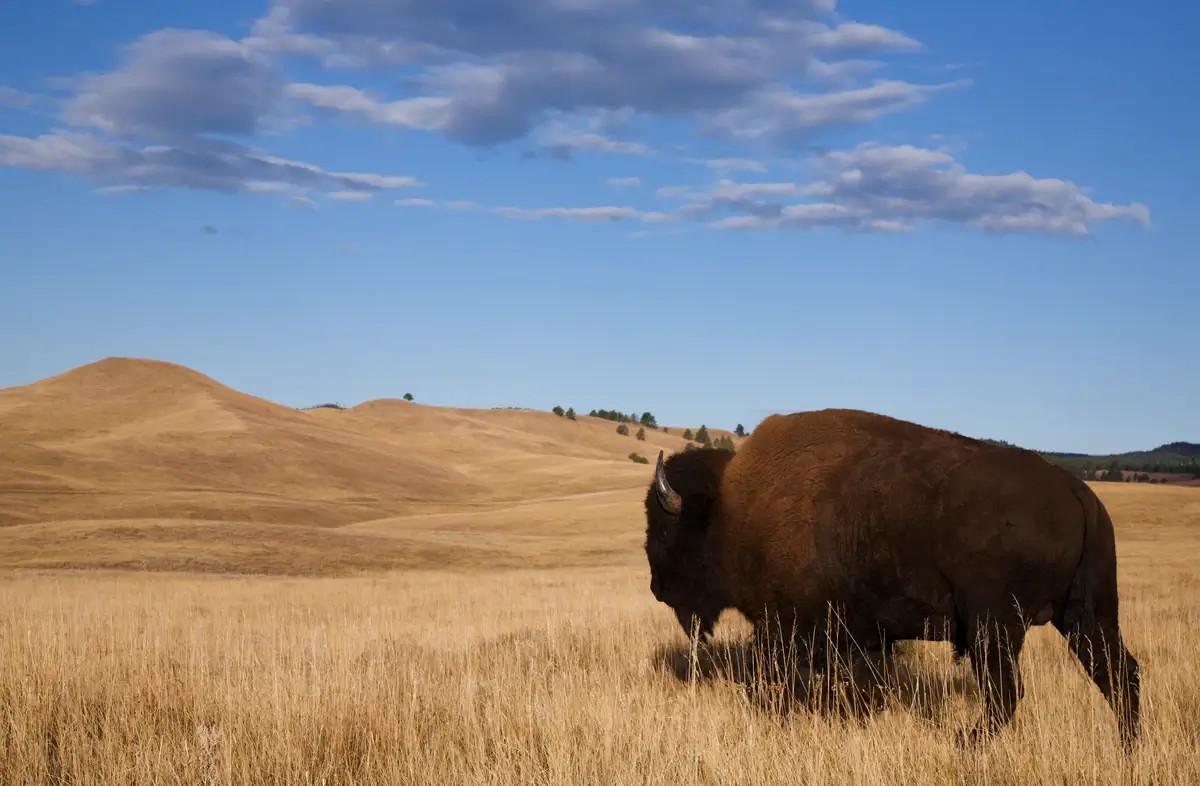
Image: vox.com
The Great Plains, an extensive stretch of the North American continent, embody a region of stark beauty and profound significance. Covering approximately 1,125,000 square miles, this area represents about one-third of the United States, extending over 3,000 miles in length from north to south and 300 to 700 miles in width from east to west. The plains span across 10 U.S. states—Montana, North Dakota, South Dakota, Wyoming, Nebraska, Kansas, Colorado, Oklahoma, Texas, and New Mexico—and extend into Canada, including parts of Manitoba, Saskatchewan, Alberta, and the Northwest Territories. The landscape is a testament to the varied history and ecology of North America, positioned between the Rio Grande in the south and the Mackenzie River delta in the north, bordered by the Rocky Mountains to the west and the Interior Lowlands to the east.
Characterized by a continental climate, the Great Plains experience cold winters and warm summers, with fluctuating levels of precipitation and humidity, making it a region of dynamic weather patterns. Notable for its low rainfall, especially in the northwestern parts, the plains see more rainfall during summer, except in its northwestern regions. The chinook, a warm, dry wind descending from the eastern slope of the Rocky Mountains, can drastically raise temperatures in a short period, showcasing the plains’ unique weather phenomena.
The Great Plains are not just a flat, monotonous stretch of land as often perceived but a complex terrain featuring low hills, incised stream valleys, and regions of exceptional flatness, such as the Llano Estacado in Texas and New Mexico. This landscape’s natural beauty is accentuated by its significant role in the continent’s ecology and agriculture, supporting a diverse range of plant and animal life and serving as a vital agricultural hub.
2. Legendary Lakes of Midwest
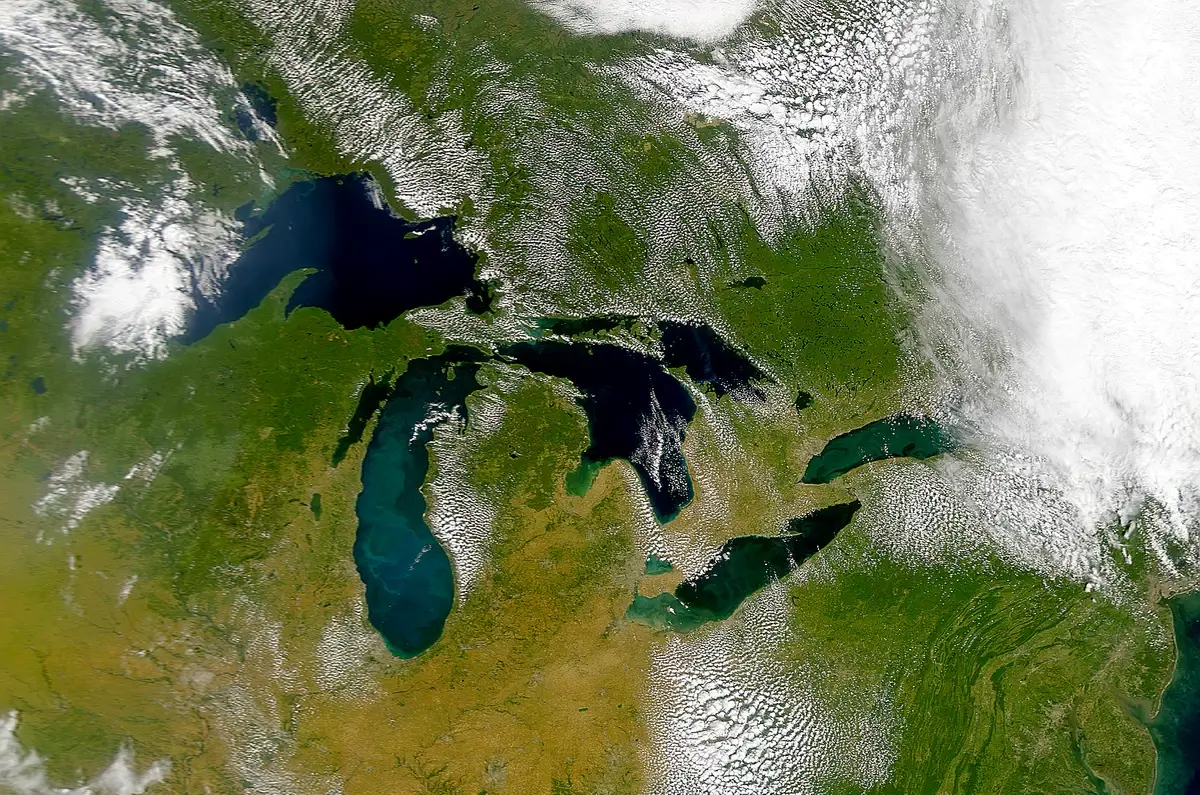
Image: nasa.gov
The Great Lakes, straddling the border between Canada and the United States, are the largest group of freshwater lakes on Earth by surface area and the second-largest by volume. This impressive collection of lakes includes Superior, Michigan, Huron, Erie, and Ontario, covering a total surface area of 94,250 square miles. These vast bodies of water hold 21% of the world’s surface fresh water. Formed around 14,000 years ago during the Last Glacial Period, the Great Lakes have played a vital role in the transportation, trade, and ecology of the North American continent.
These lakes are not just a natural wonder but also a pivotal element of the region’s economy. From supporting commercial and sports fishing to generating hydroelectric power, their resources drive numerous industries. Agriculture thrives in the fertile soils left by glaciers, with a significant portion of the surrounding areas dedicated to farming. The timber and pulp industries, tied closely to the region’s expansive forests, remain key economic pillars. Moreover, the lakes are a hub for recreation, drawing millions to their shores for various water-based activities each year.
3. Big Industries: Manufacturing’s Role in the Midwest
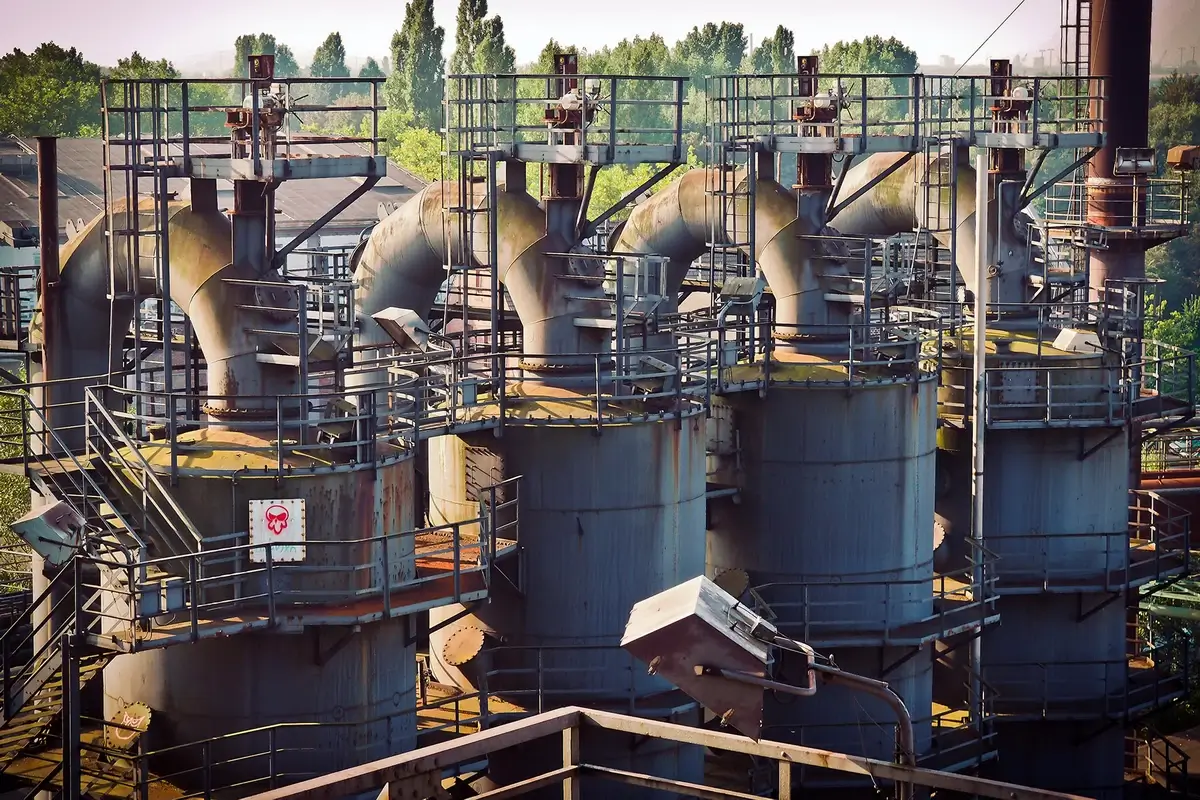
Image: milwaukeeindependent.com
Manufacturing remains a cornerstone of the Midwest economy, defining the region as a powerhouse of industrial activity. Home to over 70,000 companies, including giants like Ford and General Motors, the Midwest is synonymous with manufacturing excellence. This sector not only plays a critical role in the U.S. economy but also significantly impacts local and global markets, underscoring the Midwest’s importance on the world stage.
The equipment manufacturing industry, in particular, showcases the Midwest’s economic vitality. States like Illinois, Wisconsin, Ohio, Indiana, Iowa, and Michigan support hundreds of thousands of jobs, contributing billions to the U.S. economy. Illinois alone supports nearly 239,000 equipment manufacturing jobs, with the industry contributing $37.6 billion to the state’s economy.
Moreover, the manufacturing sector in the Midwest is not just about maintaining tradition; it’s also about innovation and adaptation. With advanced manufacturing emerging as a strong sector, the region is embracing new technologies, such as wind energy, further diversifying its industrial base and paving the way for a sustainable future.
4. Iconic Sports Teams of the Midwest

Image: acmepackingcompany.com
The Midwest boasts storied sports teams like the Green Bay Packers and Chicago Cubs, symbols of American tradition and community spirit. The Packers, established in 1919 and notable for being the NFL’s only publicly-owned team, reflect the deep community support in Green Bay, Wisconsin. Their history includes 13 league championships, more than any other NFL team, illustrating a rich legacy of success and resilience.
Meanwhile, the Chicago Cubs, one of Major League Baseball’s oldest teams, embody the heart and soul of Chicago. Their 2016 World Series win, breaking a 108-year drought, captivated the nation, showcasing the enduring love for baseball in the Midwest. Both teams, with their iconic rivalries, historic stadiums, and passionate fan bases, highlight the Midwest’s significant contribution to American sports culture.
5. Route 66: The Famous Road Across the Midwest
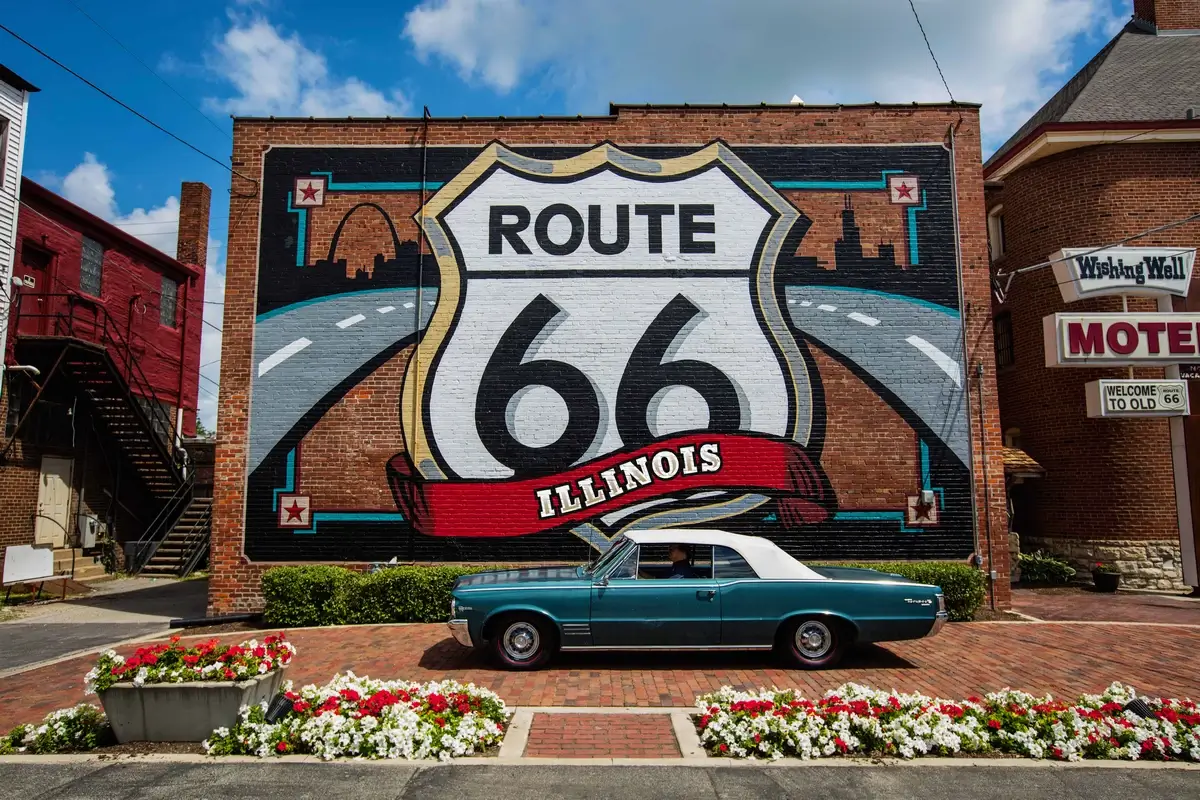
Image: visittheusa.com
Route 66, known as the Mother Road, traverses through Illinois, Missouri, and Oklahoma, offering a unique glimpse into America’s historical and cultural fabric.
In Illinois, Route 66 features a diverse array of landmarks, from the world’s largest covered wagon in Lincoln to the iconic Gemini Giant in Wilmington. These attractions, like the Railsplitter Covered Wagon and the World’s Largest Catsup Bottle in Collinsville, blend the quirky with historical significance, providing photo opportunities and a window into the past.
Missouri’s stretch of Route 66 showcases the Meramec Caverns in Stanton, the Route 66 Rocker in Cuba, and the Route 66 State Park in Eureka. Each landmark tells a story of the road’s impact on local communities and the evolution of American road travel.
Oklahoma prides itself on embracing its nearly 400 miles of Route 66, offering more drivable portions of the old Mother Road than any other state. Landmarks like the Blue Whale of Catoosa and the Golden Driller in Tulsa celebrate the state’s rich heritage and quirky roadside culture.
6. Amish Communities Thrive in the Midwest
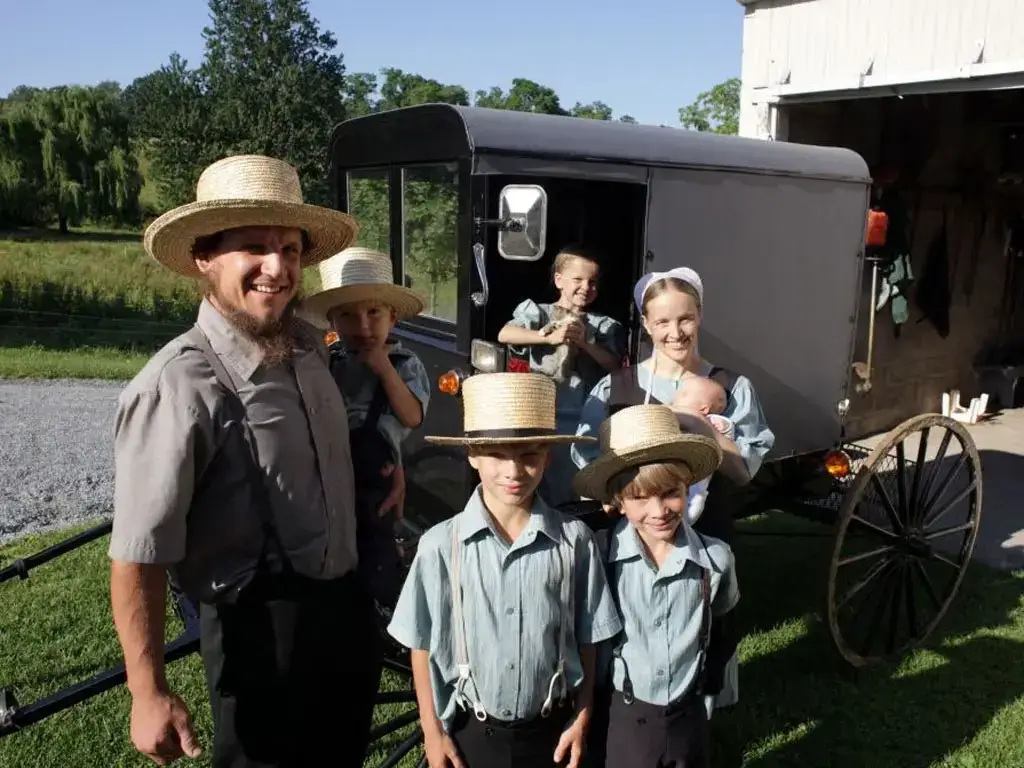
Amish family. Image: independent.co.uk
The Midwest is home to the heartland of Amish population in the United States, with significant settlements primarily located in Ohio, Pennsylvania, and Indiana. These communities are emblematic of a lifestyle that emphasizes traditional agriculture, simplicity, and a deliberate pace of life distinct from the modern mainstream. As of 2023, the Amish population in North America is estimated at 384,290, with a notable concentration—approximately 62 percent—residing in the three aforementioned states. This growth represents a significant increase from the early 2000s, illustrating the thriving nature of Amish communities amidst a rapidly evolving world.
The Amish are known for their simple living, plain dress, and reluctance to adopt modern technology, preserving a way of life that prioritizes family and community cohesion. Their growth can be attributed to large families and high retention rates of Amish youth within the community. New settlements are frequently established, driven by the search for fertile farmland, employment opportunities in specialized occupations, and a desire for rural isolation that upholds their values.
7. Prestigious Universities in the Midwest: Hubs of Excellence
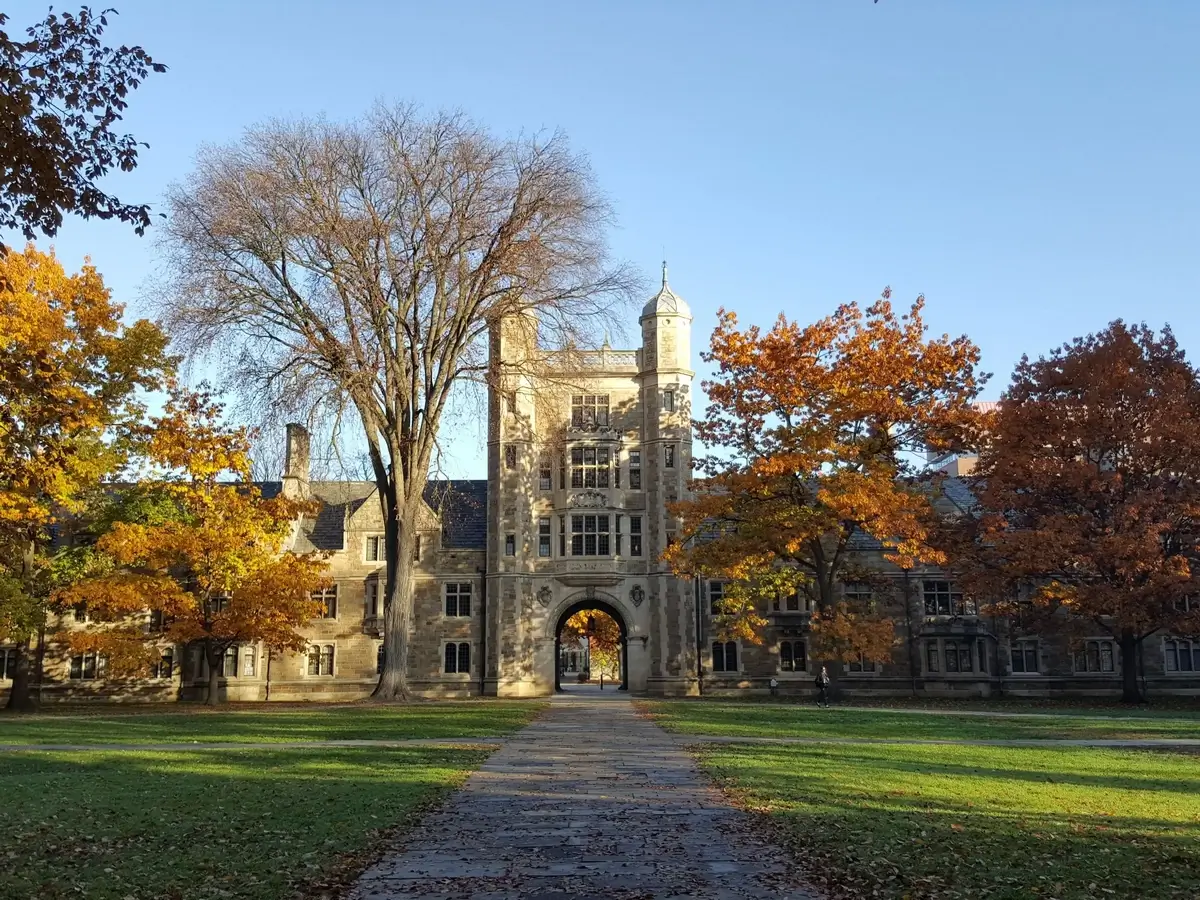
University of Michigan. Image: harringtonhousing.com
The Midwest is not only America’s heartland but also a beacon of higher education, home to renowned institutions like the University of Michigan and Northwestern University. These universities contribute significantly to a vibrant cultural and educational environment, fostering innovation and intellectual growth.
University of Michigan stands out for its comprehensive research initiatives, contributing over $1 billion annually to sponsored research projects. Its commitment to fostering a culture of trust and excellence is evident through its Culture Journey, aimed at creating a supportive community for all members.
Northwestern University, located in Evanston, Illinois, is recognized for its interdisciplinary research and academic excellence across various disciplines. It boasts top rankings in graduate education, business, law, medicine, and engineering, underscoring its impact in higher education and beyond.
8. Historical Landmarks of the Midwest
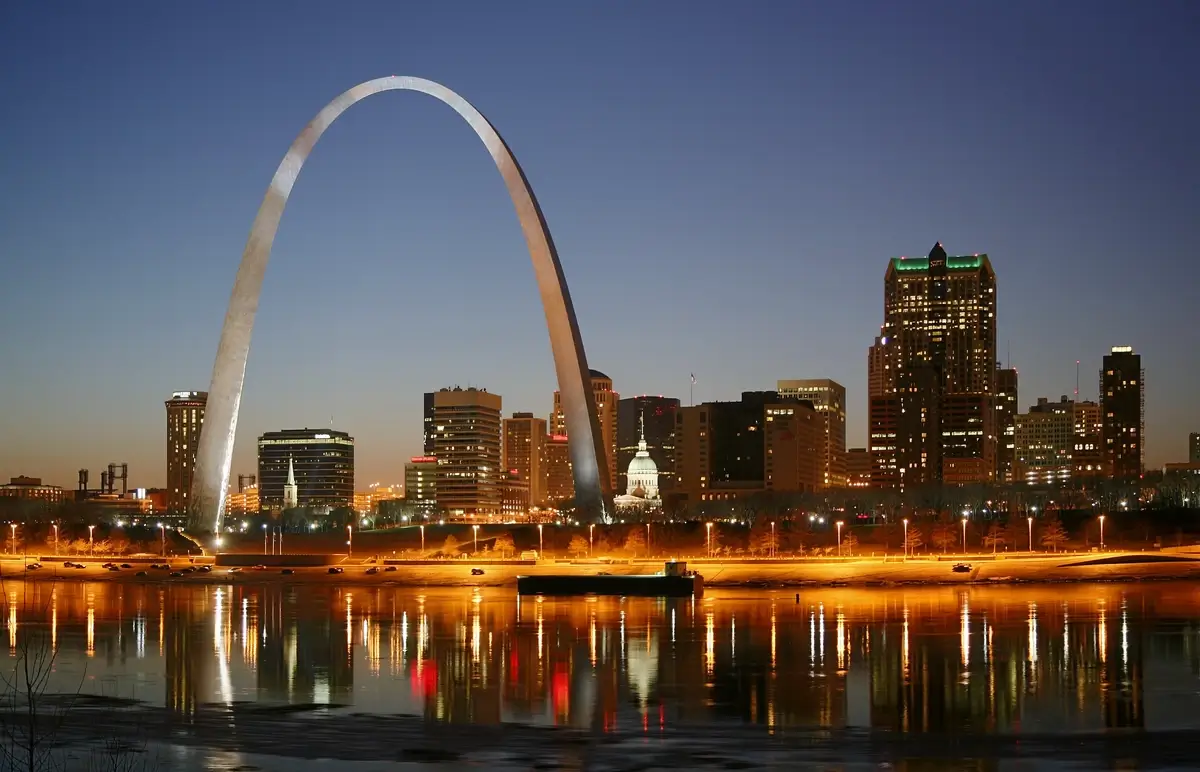
Gateway Arch in Missouri. Image: america.gov
The Midwest, rich in American history, offers a diverse array of landmarks that tell the stories of indigenous peoples, pioneers, and the nation’s growth. Here are some notable sites:
- Hollenberg Pony Express Station in Kansas: This station, a critical stop for Pony Express riders in the 1800s, now serves as a museum where visitors can explore period rooms and learn about this fascinating era.
- Lincoln Home National Historic Site in Springfield, Illinois: The former residence of President Abraham Lincoln, this site preserves the home where Lincoln lived for 17 years, offering insights into his life and times.
- Gateway Arch in Missouri: An iconic symbol of the westward expansion of the United States, this 630-foot stainless steel monument honors Thomas Jefferson’s vision and the pioneers who contributed to the nation’s growth.
- Chimney Rock in Nebraska: A vital landmark for settlers traveling along the Oregon, California, and Mormon Trails in the 1800s, Chimney Rock signified progress on their westward journey.
- Sleeping Bear Dunes National Lakeshore in Michigan: Featuring towering sand dunes along Lake Michigan’s shore, this site offers activities like hiking and exploring the lighthouse, showcasing the Midwest’s natural beauty.
9. Geographical Center of the USA: Rugby, North Dakota
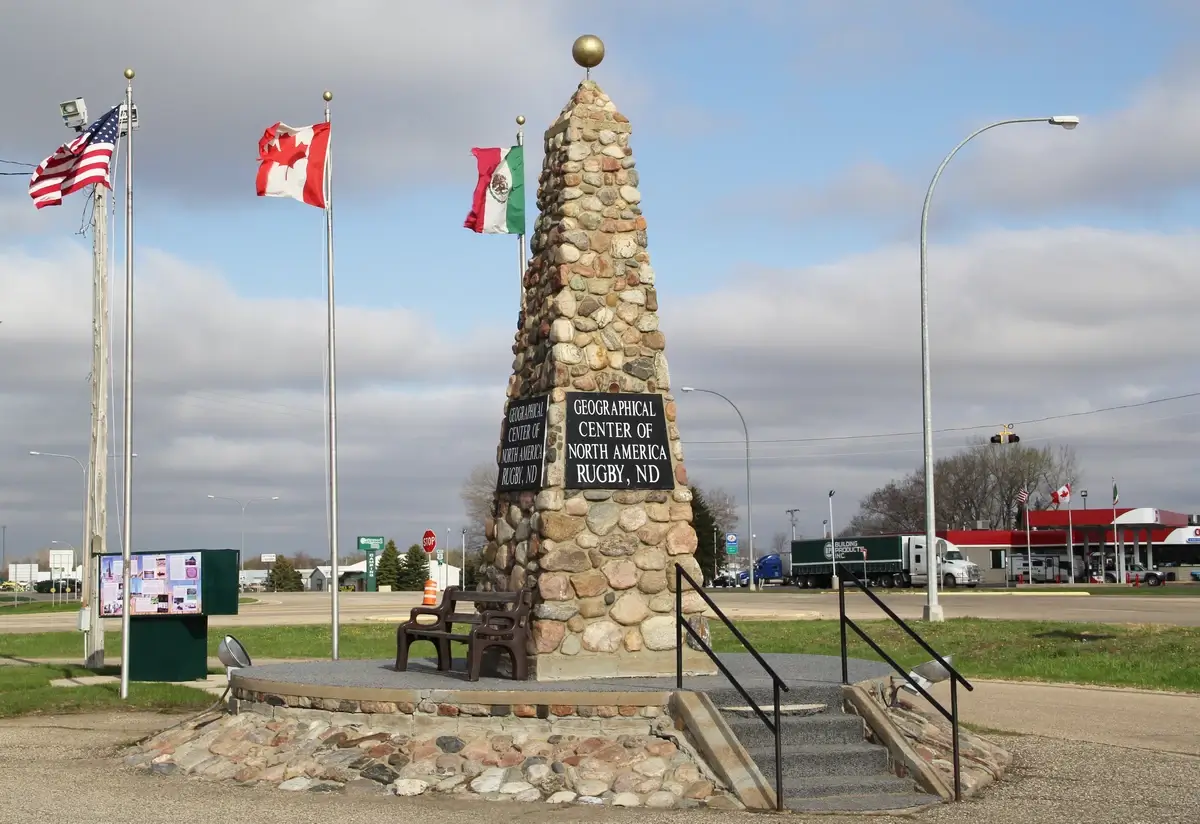
Geographical Center of North America, Rugby, Pierce County, North Dakota. Image: Terry Feuerborn / Flickr
Rugby, North Dakota, has long been recognized as the geographical center of North America. The United States Geological Survey (USGS) identified this point in 1928, and the town celebrated this designation by erecting a 15-foot obelisk monument in 1931. While Rugby maintained this title for over 90 years, recent calculations using modern methods have suggested alternative locations for the continent’s center. Despite these findings, Rugby’s obelisk remains a significant tourist attraction, symbolizing the town’s historical claim.
The determination of North America’s geographical center is based on various calculation methods. Originally, a simplistic method involving a cardboard cutout of the continent was used, placing the center near Rugby. However, advancements in geographic information systems have led to new calculations, with some pointing to the town of Center, North Dakota, as the true center. These discussions underline the complexity of accurately determining such a point on a continent with irregular borders and varying definitions of geographic center.
10. Magicians’ Gathering in Colon
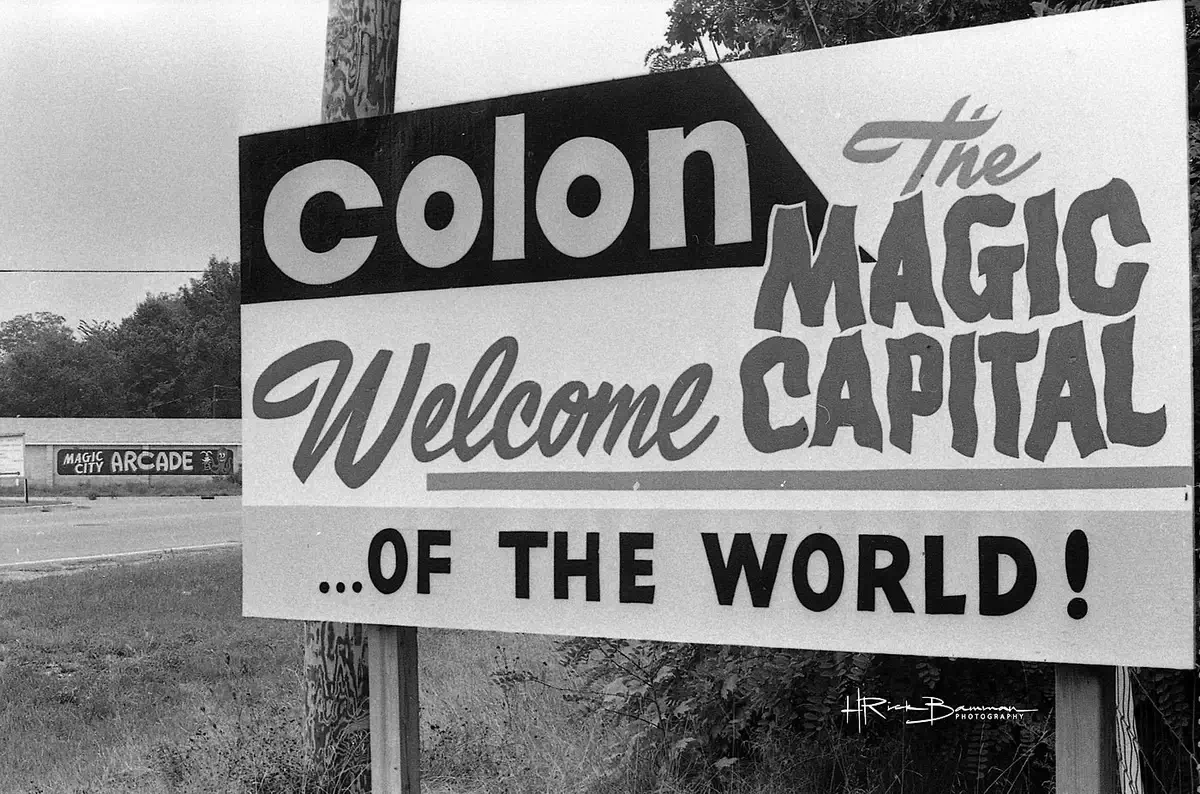
Image: mix957gr.com
Colon, a small town in Michigan, plays host to an extraordinary event that places it firmly on the map within the magical community. Every year, magicians from across the globe converge on this Midwest town for Abbott’s Get-Together, an annual magic convention that celebrates the art of illusion and magic. Founded in 1934 by Percy Abbott and Recil Bordner, the event is a testament to the town’s deep-rooted history with magic, dating back to when the famous magician Harry Blackstone chose Colon for his summer performances.
This convention isn’t just a gathering; it’s a vibrant festival where magicians, both seasoned and aspiring, engage in stage shows, close-up magic galas, lectures, contests, and explore a myriad of magical paraphernalia in the dealers’ room. The town’s commitment to magic is further immortalized by its “Magic Walk of Fame,” honoring legendary magicians with bronze stars embedded in the sidewalks.
11. Vibrant Music Scene: Chicago and Detroit’s Influence on Blues, Jazz, and Motown

Image: bobcorritore.com
The Midwest, particularly Chicago and Detroit, has played a pivotal role in the development of blues, jazz, and Motown music, significantly shaping the musical landscape of America and beyond. Chicago’s blues scene, emerging from the Great Migration, transformed earlier blues styles into a distinct urban blues sound, heavily influenced by Mississippi bluesmen. This new sound was characterized by the amplified electric guitar and harmonica, creating a style that would heavily influence future genres including rock, R&B, and soul.
Chicago also made significant contributions to jazz, with the city’s vibrant nightlife fostering the formation of white jazz groups in the 1920s. This led to the creation of Chicago Jazz, a style known for its energetic and innovative approach. Musicians like Benny Goodman and Bud Freeman became iconic figures in this movement, helping to spread its influence well into the 20th century.
Detroit’s musical legacy is synonymous with Motown, a genre that revolutionized the music industry. Founded by Berry Gordy Jr., Motown not only produced a new sound that blended elements of jazz, blues, R&B, and pop, but it also became a powerful symbol of African American success and creativity. The city’s earlier blues scene, while overshadowed by the Motown phenomenon, provided a foundation for this groundbreaking music style, influencing artists and bands worldwide.
12. Agricultural Innovation: The “Breadbasket of America”
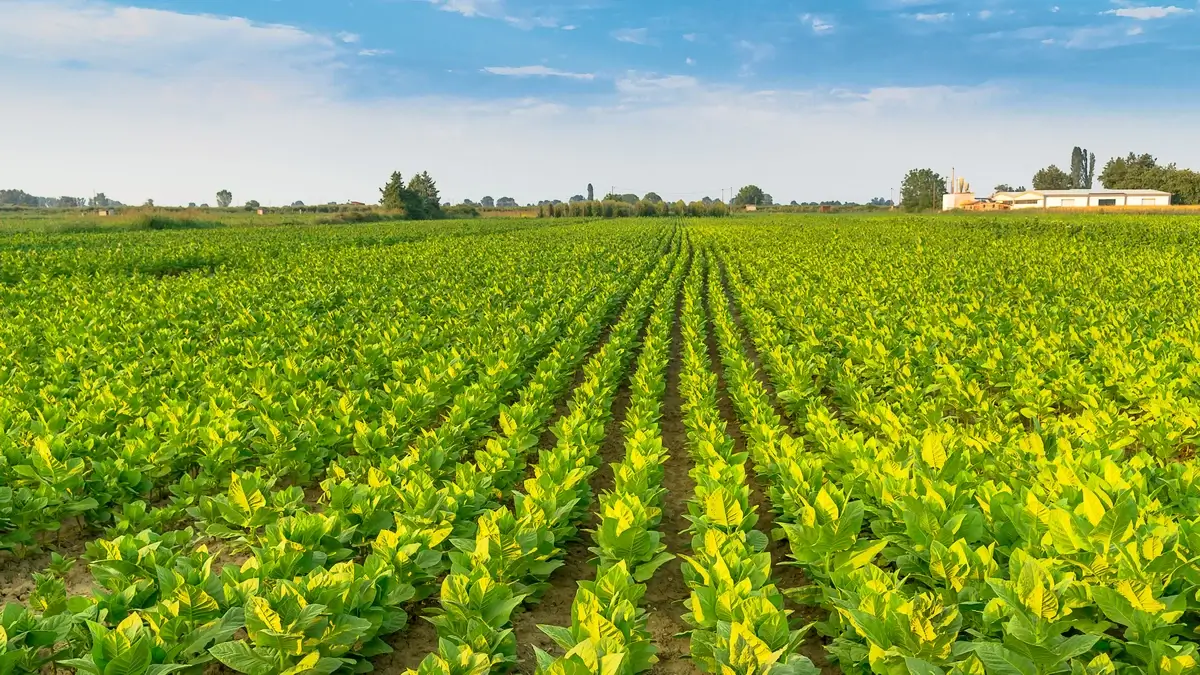
Soybean field in the Midwest. Image: freightwaves.com
The Midwest, often referred to as the “Breadbasket of America,” stands as a testament to the United States’ agricultural prowess, with states like Illinois, Indiana, Iowa, and others leading the way. This region is celebrated for its diverse crop production, encompassing corn, soybeans, and a plethora of fruits and vegetables such as apples, asparagus, and blueberries, among others. This diversity not only supports the local and national economies but also contributes significantly to global food supplies.
Innovations in agricultural practices have been key to the Midwest’s success. Recent years have seen a surge in research and development aimed at enhancing crop yield, sustainability, and resilience. For instance, facilities like the Compass Minerals Plant Nutrition North American Innovation Center focus on advancing plant nutrition technologies. Similarly, initiatives by the USDA to relocate major research agencies closer to the agricultural heartlands underscore the commitment to bridging the gap between research and practical farming applications.
Moreover, the Midwest’s strategic location and rich soil have enabled it to serve as a vital hub for fresh produce distribution across the United States. Its proximity to major population centers reduces transportation costs and ensures the delivery of fresh products, further solidifying its role in the nation’s food security.
13. Authors like Mark Twain and Laura Ingalls Wilder hail from the Midwest

A vintage photograph of Mark Twain. Image: blogs.loc.gov
The Midwest’s contribution to American literature is profoundly highlighted by the works of authors such as Mark Twain and Laura Ingalls Wilder. Born in Hannibal, Missouri, Twain drew upon his experiences along the Mississippi River to create stories that resonate with humor, social critique, and vivid character portrayals, notably in “The Adventures of Huckleberry Finn” and “The Adventures of Tom Sawyer.”
Laura Ingalls Wilder, born in Pepin, Wisconsin, penned the “Little House” series, which provides a compelling narrative of her family’s life across various Midwest locations. These stories offer a detailed view of pioneering life, encapsulating the joys, struggles, and resilience of settler families.
Twain and Wilder’s narratives extend beyond mere storytelling; they serve as a historical reflection of the Midwest’s development, capturing the essence of American life in their times. Their works remain central to the American literary canon, providing invaluable insights into the human spirit and the historical landscape of the Midwest.
14. Cleveland’s Flammable River: The Cuyahoga River Fires
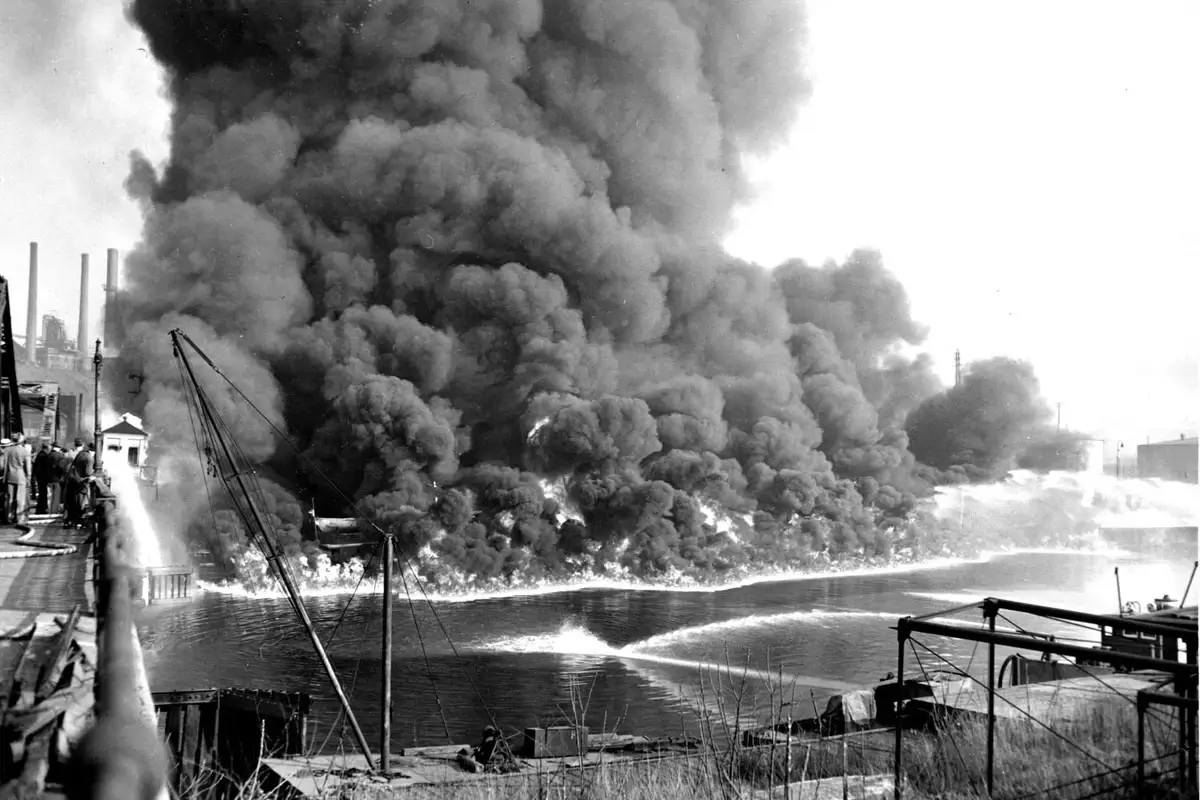
Historic image of the Cuyahoga River on fire. Image: alleghenyfront.org
The Cuyahoga River, flowing through Cleveland, Ohio, has caught fire at least 13 times due to rampant pollution, with the most famous incident occurring on June 22, 1969. This fire, lasting about 30 minutes and causing around $50,000 in damage, became a symbol of the environmental crisis in the United States, even though it was neither the first nor the most severe of the river’s fires. Historically, the river was used as a dumping ground for industrial waste, including oil, solvents, and other hazardous materials, leading to these fires.
The 1969 fire was a turning point, galvanizing public opinion and leading to significant environmental legislation. Despite its relatively minor scale, the event was sensationalized by national media, contrasting with local perceptions of the fire as another event in the city’s long history of industrial pollution. The fire, along with other environmental crises of the time, helped catalyze the formation of the Environmental Protection Agency (EPA) and the enactment of the Clean Water Act, marking the beginning of a national effort to address water pollution.
15. Quieter Living in the Midwest
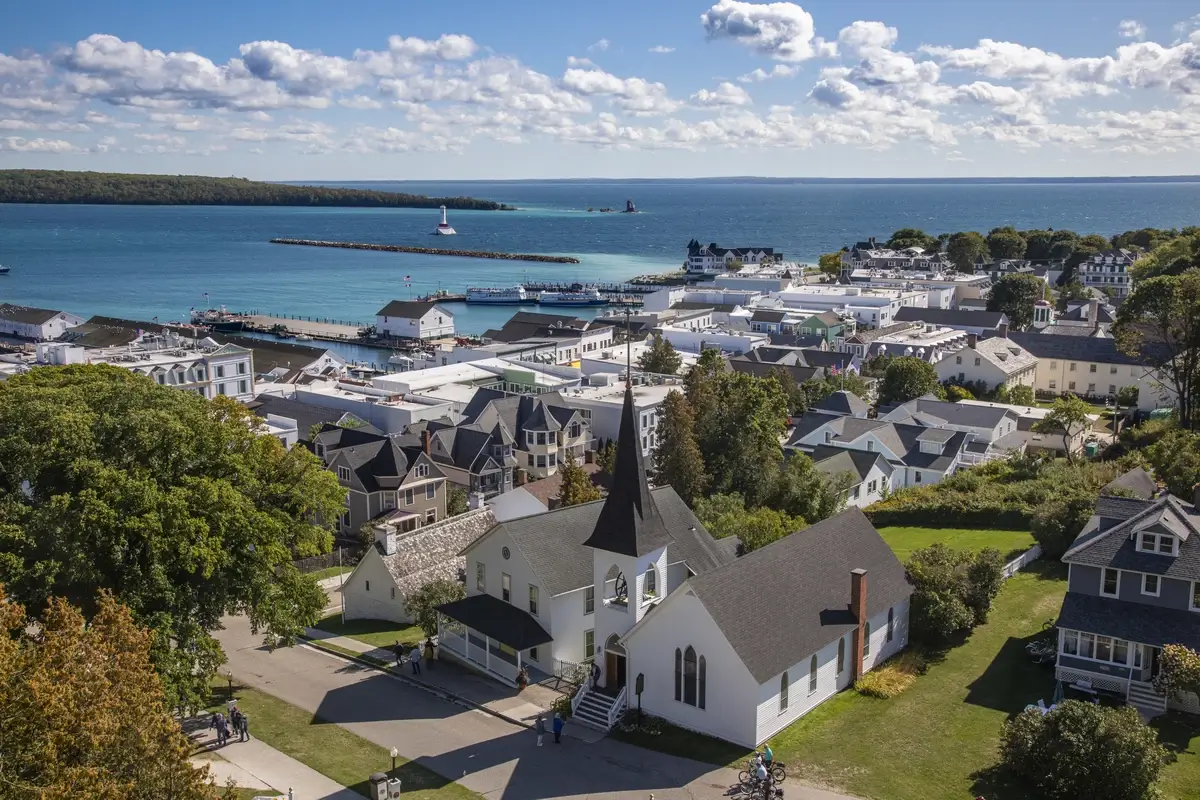
Midwest small-town in Michigan. Image: buzzfeed.com
Despite the presence of bustling metropolises like Chicago and Minneapolis, the Midwest offers an abundance of quieter, rural, and small-town living options that exemplify America’s heartland charm. This region is a testament to the American spirit, featuring communities where life moves at a slower pace, neighbors know each other by name, and local traditions hold deep significance.
The Midwest’s small towns and rural areas, from the rolling hills and historical sites of Ohio’s Glenwillow to the lush woodlands and friendly locals of Wisconsin’s Bayside, offer a serene alternative to city living. These communities provide not only a sense of belonging but also proximity to nature’s beauty, historical depth, and a lower cost of living. Each town boasts unique attractions, whether it’s the environmental focus of Bayside, Wisconsin, or the historical architecture of Franklin, Michigan.
Data from the U.S. Census Bureau shows that most of the nation’s incorporated places have fewer than 5,000 residents, illustrating the prevalence of smaller communities across the country, including the Midwest. This highlights a significant portion of the population opting for the tranquility and close-knit atmosphere that smaller towns offer.
For those drawn to culture and the arts, towns like Nashville, Indiana, serve as hubs for creativity, home to several galleries and the renowned Brown County Art Gallery. Meanwhile, Iowa City, Iowa, not only bustles with university life but also hosts a range of festivals and boasts the prestigious designation of a UNESCO City of Literature. Other notable mentions include Dodge City, Kansas, with its rich Wild West heritage, and Frankenmuth, Michigan, known as “Little Bavaria” for its German roots and traditions.
FAQ
Why did they call it the Midwest?
The term “Midwest” was coined to describe the geographic region of the United States that lies in the middle of the country and towards the west. Initially, as the United States expanded, areas such as Ohio, Indiana, and Illinois were considered western territories. As the nation continued to grow and encompass more land towards the Pacific Ocean, these states became known as part of the “Middle West,” which was later shortened to “Midwest.”
What are the 5 biggest cities in the Midwest?
The five biggest cities in the Midwest, based on population, are:
- Chicago, Illinois
- Indianapolis, Indiana
- Columbus, Ohio
- Detroit, Michigan
- Milwaukee, Wisconsin
How many people live in the Midwest?
As of the latest U.S. Census data, approximately 68 million people live in the Midwest. This number can fluctuate with new census data, reflecting migration trends, birth rates, and other demographic changes.
What are some food facts about the Midwest?
The Midwest is known for its significant agricultural output and contribution to American cuisine. Key food facts include:
- It is a leading producer of corn and soybeans.
- Known for dishes such as deep-dish pizza (Chicago), barbecue (Kansas City), and hotdish (Minnesota).
- The region has a strong tradition of dairy farming, particularly in Wisconsin, which is famous for its cheese.
What are one of the most well-known features of the Midwest?
One of the most well-known features of the Midwest is the Great Lakes. This group of five freshwater lakes—Superior, Michigan, Huron, Erie, and Ontario—forms the largest group of freshwater lakes in the world by total area and are a significant natural resource for the region. They provide water for consumption, transportation, and recreation, playing a vital role in the economic and social life of the Midwest.


